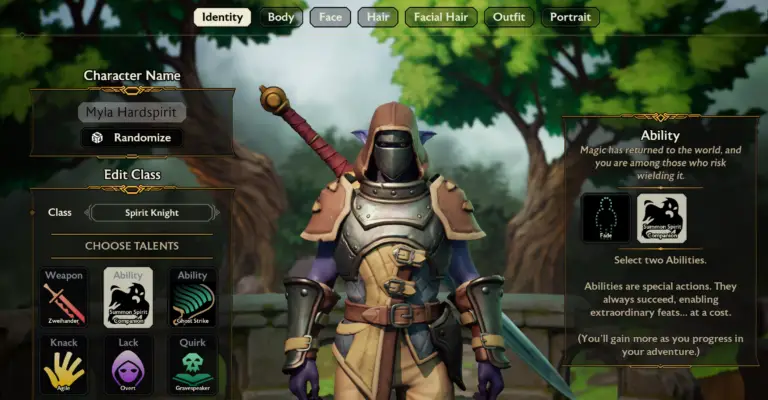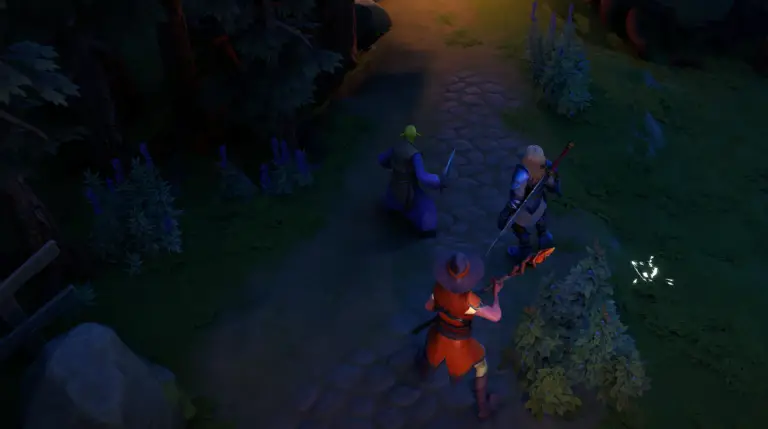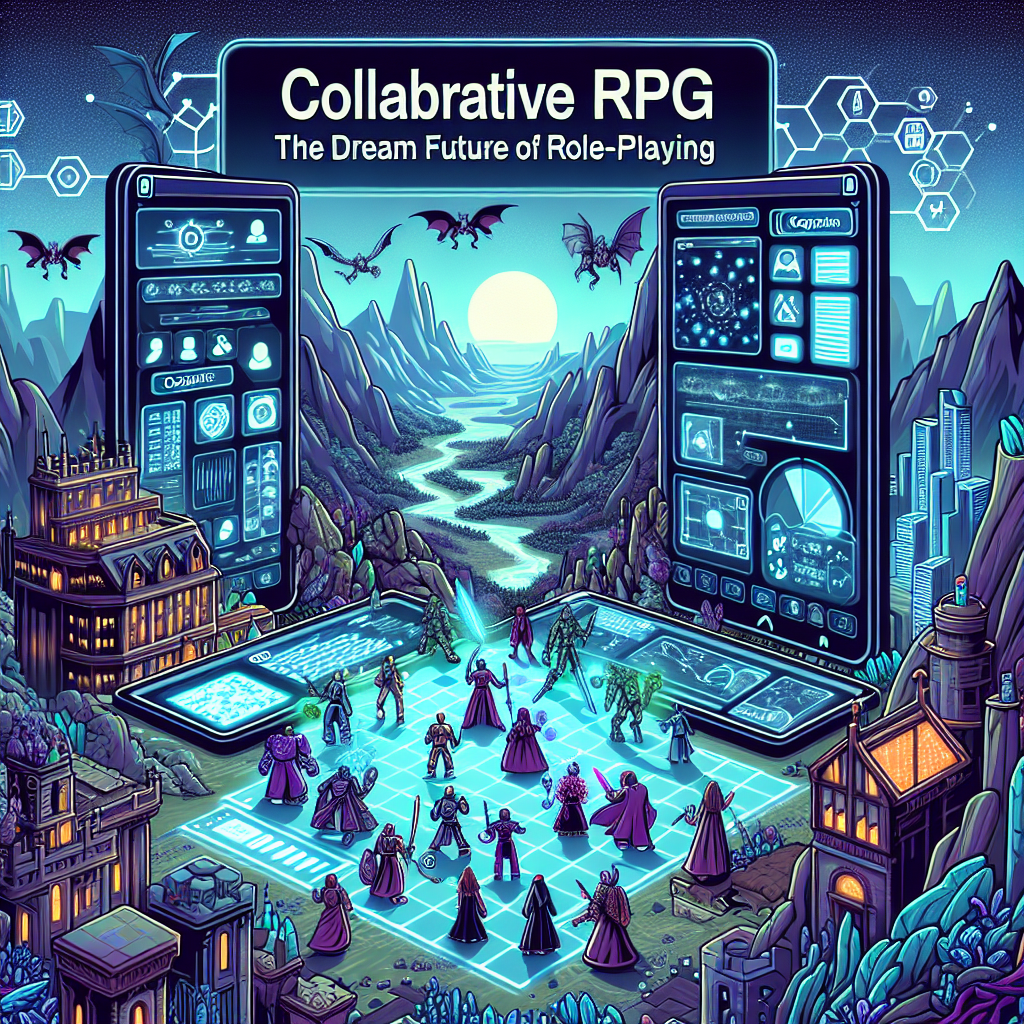Personal Experiences with Bad Rolls
As a long-time enthusiast of tabletop RPGs, I’ve had my fair share of encounters with the dreaded bad roll. These moments of misfortune, while often frustrating, have a peculiar way of becoming the most memorable parts of a gaming session. This phenomenon isn’t confined to the physical dice on a tabletop; it has seamlessly transitioned into the digital realm, particularly in video games like the collaborative RPG Project ORCS by Lightforge Games. In this virtual landscape, a poor roll can spiral into a series of entertaining and unexpected events.
Take, for instance, a recent adventure within Project ORCS where a botched roll during an attempt to disrupt an arcane ritual resulted in an out-of-control lich wreaking havoc. This could have spelled disaster, but instead, it led to the lich becoming an unlikely ally, magically bound to a dagger wielded by our party’s blacksmith. The concept of a pet lich might sound alarming, but it’s these twists that inject a unique charm into the game, proving that sometimes, the best stories stem from the worst rolls.

Interview Insights
In a conversation with Matt Schembari, CEO of Lightforge Games, the vision for Project ORCS was laid out with a promise to encapsulate the very essence of traditional tabletop RPGs (TTRPGs). The ambition was to go beyond what has been achieved by other RPGs in the digital space, aiming to offer an experience that rivals the depth and engagement found in games like the acclaimed Baldur’s Gate 3.
After spending an hour immersed in the world of Project ORCS, the initial impressions suggest that the game is well on its way to fulfilling that promise. The gameplay mechanics, the freedom to shape the narrative, and the collaborative nature of the game all contribute to a TTRPG experience that feels both familiar and refreshingly innovative.
Character Creation and Adventure Selection
The journey into the realm of Project ORCS begins with the pivotal process of character creation. Upon logging into the game, players are greeted with the opportunity to craft their unique avatar. The steps involved in this creative phase are designed to be intuitive, allowing players to quickly bring their envisioned adventurers to life. Once the characters take shape, the group is then faced with the strategic decision of selecting an adventure that will set the stage for their exploits.
- Intuitive character customization options
- Strategic adventure selection impacting game progression
The decision-making doesn’t stop at character creation. The group must deliberate on which quests to undertake, weighing the potential rewards and challenges. In this instance, the party chose to prioritize the enhancement of their safehold’s capabilities, opting for an adventure that promised to upgrade their blacksmith, thus granting access to superior weaponry. This choice reflects the game’s emphasis on strategic planning and the impact of collective decision-making on the unfolding narrative.

Collaborative Storytelling and Scene Building
Project ORCS elevates the role-playing experience by empowering players to collaboratively construct scenes and scenarios. This innovative approach was exemplified during an encounter set in a forest clearing. The game’s design allows players to start with a blank canvas and, as a group, populate it with elements that bring the scene to life. From placing an altar to surrounding it with cultists and skeletons, each player contributes to the creation of a dynamic and interactive environment.
The flexibility of this system is a standout feature, enabling players to not only choose the components of the scene but also to modify them in real-time. This level of customization ensures that no two adventures are the same and that the story unfolds in a way that is unique to each party’s collective imagination. The result is a gaming experience that is as much about creativity as it is about strategy and role-playing.

RPG Builder
The RPG builder feature within Project ORCS is a testament to the game’s dedication to player agency and customization. This tool allows adventurers to tailor NPCs and props, enhancing the depth and immersion of the gaming experience. The beauty of starting with a basic suite of options is that it eases players into the game’s mechanics, preventing them from feeling overwhelmed by choices.
As players progress through their quests, they unlock a wider array of creative tools, enabling them to craft increasingly complex and personalized scenarios. This progression system not only rewards players for their achievements but also encourages them to explore the full potential of their storytelling prowess. The RPG builder is a cornerstone of Project ORCS, ensuring that each player’s journey is as unique as their imagination.
Combat Mechanics
The combat system in Project ORCS is a blend of real-time and turn-based mechanics, offering a unique twist on traditional RPG battles. What sets this game apart are the distinctive quirks like banes and boons that accompany various roll outcomes. A low attack roll, for instance, doesn’t spell outright failure; instead, it presents a successful attack with an added complication, or bane, that players must navigate.
- Real-time and turn-based combat blend
- Unique banes and boons tied to roll outcomes
- Strategic depth in every encounter
This nuanced approach to combat ensures that every encounter is filled with strategic depth. Players must think on their feet, adapting to both the boons of high rolls and the banes of low ones. The result is a combat experience that is as unpredictable as it is engaging, keeping players invested in every moment of the fray.
Enter the Lich
The encounter with the lich in Project ORCS serves as a prime example of the game’s dynamic storytelling capabilities. During a pivotal moment, a player’s strategy to disrupt a cultist ritual inadvertently led to the awakening of a powerful lich. This unforeseen event could have spelled doom for the party, but instead, it opened the door to an unexpected alliance.
The player, leveraging their character’s abilities, managed to sway the lich to their side. This turn of events was facilitated by the game’s flexible system, which allows for creative solutions to arise from the chaos of battle. The lich, once a potential foe, became a formidable ally, adding a layer of complexity and intrigue to the ongoing narrative.
Consequences and Curses
In the world of Project ORCS, every action can lead to a range of consequences, including the onset of corruption and curses that impact gameplay. For instance, when a player chooses to use a powerful but risky attack, they may succeed in their immediate goal while also becoming corrupted. This corruption manifests in-game as a curse, which could take various forms such as a jinx that causes objects to break or a wasting curse that diminishes the character’s physical capabilities.
These gameplay mechanics introduce a layer of strategic decision-making, as players must weigh the potential benefits of their actions against the possible repercussions. The curses are not just simple debuffs; they are narrative elements that can shape the character’s journey and the story that unfolds, adding depth and gravity to the choices players make in Project ORCS.
Quest Completion and Safehold Development
The completion of a quest in Project ORCS is more than just a victory; it’s an opportunity for growth and development within the game’s world. Successfully navigating the challenges of an adventure not only rewards players with experience points but also enhances their safehold. For example, rescuing the blacksmith NPC not only levels up this character, providing access to better gear, but also introduces new allies like the pet lich and wolves.
These new additions to the safehold are not merely for show; they serve as narrative constructs that can be woven into future adventures. The game’s design allows players and their guide to decide how to utilize these allies, whether bringing them along on quests or integrating them into the safehold’s story. Lightforge Games is also exploring AI features that could give NPCs like the lich the ability to offer quests, further enriching the player’s experience.
Collaborative Storytelling and Surprises
The collaborative storytelling approach of Project ORCS is a core feature that distinguishes it from other RPGs. While players have significant control over the direction of the narrative, the game still retains the element of surprise that is so integral to the TTRPG experience. The process of building quests together, discussing potential challenges, and determining the consequences of actions does not detract from the sense of discovery and spontaneity.
Indeed, the game’s design encourages improvisation and on-the-fly creativity, ensuring that no two quests are ever the same. The prompts provided by the game serve as a framework within which players can weave their tales, allowing for unexpected twists and turns that keep the adventure fresh and engaging. This embrace of the improv spirit is what makes Project ORCS a true testament to the unpredictable and collaborative nature of TTRPGs.
Early Access and Livestreams
Anticipation is building as Project ORCS is expected to launch into early access this year, offering players a chance to dive into its rich, collaborative world. For those eager to catch a glimpse of the game in action, the developer is hosting a series of livestreams. These streams will provide an opportunity for potential players to experience the game’s unique blend of storytelling, strategy, and improvisation firsthand.
Whether you’re a seasoned TTRPG player or new to the genre, these livestreams are an excellent way to see what Project ORCS has in store. Keep an eye out for these events to join the community and start envisioning your own adventures in this innovative RPG landscape.

